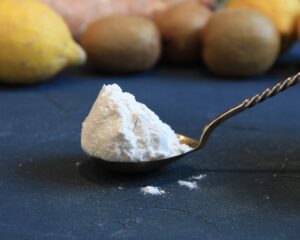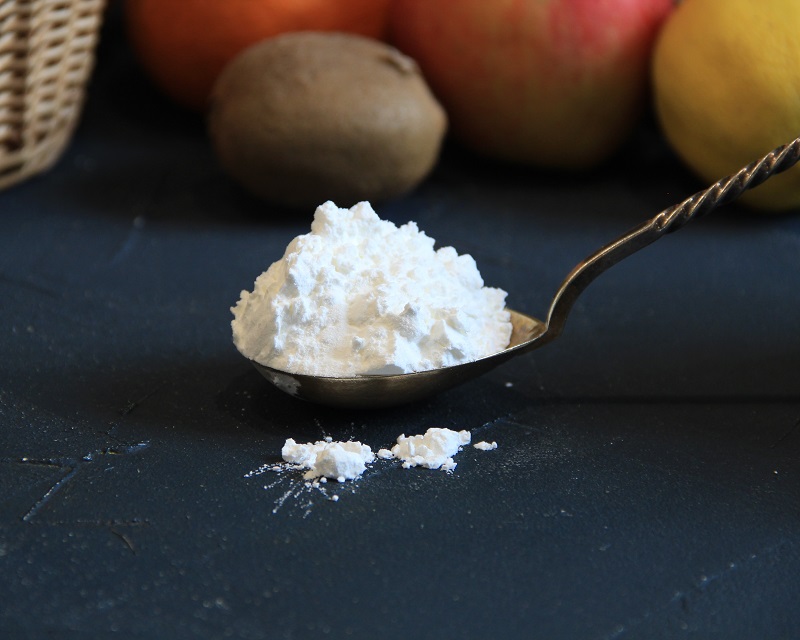

Organic tapioca starch
From 0.96€
Organic tapioca starch (flour)
Tapioca (Manihot esculenta) flour, also known as tapioca starch, is a popular gluten-free alternative to wheat flour derived from cassava, a starchy tuber native to South America. Tapioca flour has gained popularity in recent years due to its versatility and suitability for a wide range of dietary needs.
Benefits of tapioca flour
Gluten-free: Tapioca flour is naturally gluten-free, making it a great choice for people with coeliac disease or gluten sensitivity. This allows those with gluten problems to enjoy baked goods and other dishes that traditionally contain wheat flour.
Easy to digest: tapioca flour is easy on the digestive system, which can be particularly helpful for people with digestive problems or sensitive stomachs. They are less likely to cause gastrointestinal discomfort than some other starches.
Energy source: tapioca flour is a source of carbohydrates and a quick source of energy. It is often used in recipes to give a starchy texture and increase the calorific value of gluten-free dishes.
Thickening agent: The high starch content of tapioca flour makes it an effective thickener for soups and sauces. They give these dishes a glossy sheen without imparting the taste of flour.
Allergy-friendly: Tapioca flour is suitable for those with various dietary restrictions. They do not contain common allergens such as wheat, dairy, nuts and soya.
Source of iron: Tapioca flour contains iron, which is essential for the formation of red blood cells and oxygen transport. Including it in your diet can help combat iron deficiency.
Attention
Calories: tapioca flour is calorie-dense and should be consumed in moderation, especially if you watch your calorie intake.
Low in nutrients: although tapioca flour contains iron, it is generally low in essential nutrients such as vitamins and minerals.
Effects on blood sugar: Tapioca flour has a high glycaemic index, which means it can quickly raise blood sugar levels. People with diabetes or those trying to control their blood sugar should take it in moderation.
Intake: Tapioca flour is made from cassava, which contains compounds called cyanogenic glycosides. When consumed in large quantities, these compounds can release cyanide. However, the processing methods used for tapioca flour generally remove most of these compounds, making it safe to consume in small quantities.
Use
Gluten-free baked goods: tapioca flour can be used to make gluten-free bread, muffins, pancakes and biscuits, cakes. It gives baked goods a light texture.
Thickening agent: an excellent thickener for sauces, gravies and puddings. To use tapioca starch as a thickener, mix them with a small amount of cold liquid before adding to the hot mixture.
Baking: tapioca flour can be used as a gluten-free alternative to breadcrumbs.
Gluten-free flour blends: tapioca flour is used in many gluten-free flour blends to mimic the texture of wheat flour.
When used consciously and in moderation, tapioca flour can open up a world of culinary possibilities for those seeking gluten-free alternatives.
Tapioca starch has no specific taste or smell and therefore does not alter the taste of dishes.
NOTE. The information contained herein should not be construed as a recommendation for treatment or other health issues. We encourage you to make personal decisions about your personal health, taking into account a wide range of sources of information.
100% tapioca starch
Energy 1519 kJ / 358 kcal
Fat: 0.02 g
- Of which saturated: 0 g
Carbohydrates: 89 g
- Of which sugars: 3.4 g
Fiber: 0.9 g
Protein: 0.2 g
Salt: 0 g
Store in a cool, dry place.
